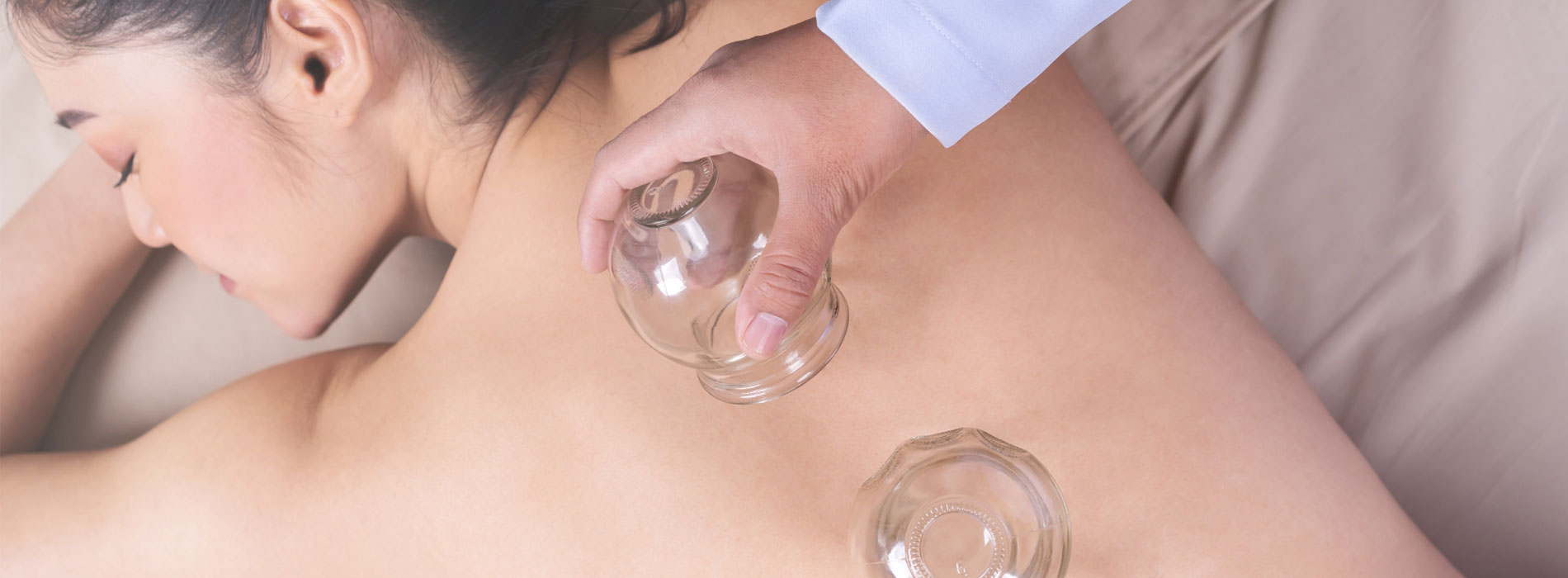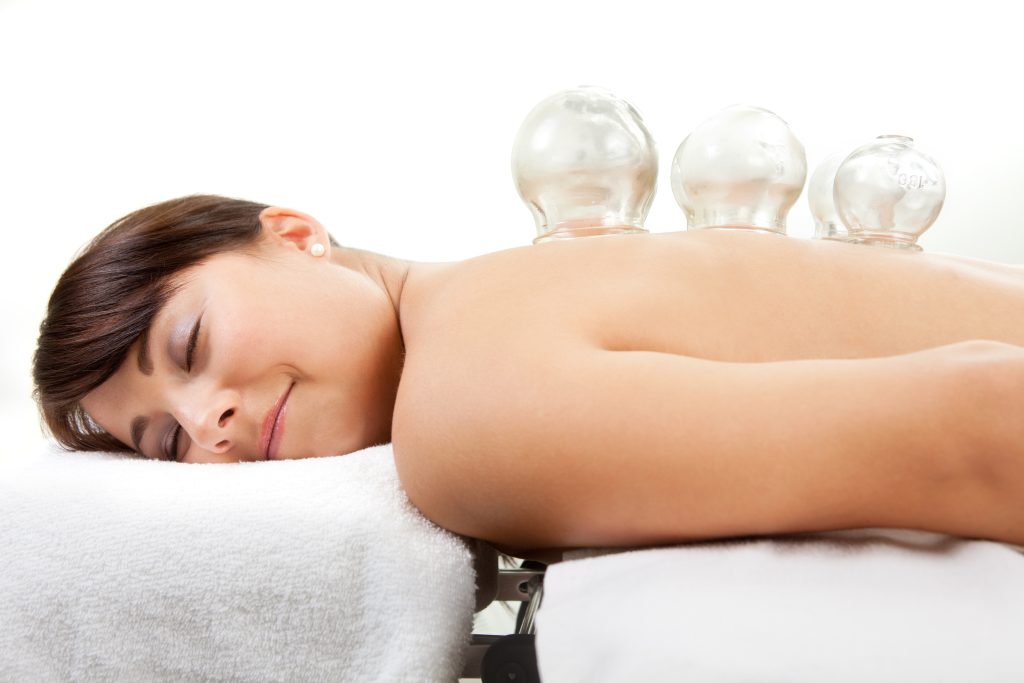
Cupping therapy is an ancient medical treatment; its Chinese roots date back to 300 or 400 A.D. Egyptian and Middle Eastern cultures also have ancient records of the practice. Cupping involves placing a cup (glass, bamboo or plastic jars) on the skin and creating a vacuum by suctioning out the air in order to draw and hold skin and superficial muscles inside the cup. The purpose of cupping is to enhance circulation, help relieve pain, remove “heat” and pull out the toxins that linger in your body’s tissues.

Cupping may help manage pain. It may help release tissues deep inside the body, relax tense muscles and ease stiffness associated with chronic back and neck pains. Cupping therapy may also promote relaxation. It often helps alleviate physical complaints and allows people to enter a more relaxed state. Cupping may also be used to manage some problems related to gastrointestinal disorders and lung diseases, in consultation with other treating health practitioners.
Cupping should be done on fleshy areas of the body and should not be used on inflamed skin, where there is a high fever, convulsions or an increased tendency to bruise, or on the abdominal or lower back area during pregnancy. The cups should only be moved over fleshy areas of the body. Chinese Cupping Therapy is often used in conjunction with more commonly known forms of traditional Chinese medicine treatments and methods such as acupuncture and remedial massage.
Cupping treatment causes no pain, but there can be a sensation of tightness on the area that has been sucked up into the cup, which is relieved when the cup is removed. After cupping, it is normal to experience bruising on the skin that can vary in colour from light pink/brown to bright red or dark purple.
For more information regarding Chinese cupping therapy, please call your closest location (Perth Clinic: 57/76 Newcastle Street (08) 9228 8828, Subiaco Clinic: 6/1 Sheen Street (08) 9380 4171). Alternatively, you can send us your queries through our online contact page.
Cupping therapy is an ancient medical treatment; its Chinese roots date back to 300 or 400 A.D. Egyptian and Middle Eastern cultures also have ancient records of the practice. Cupping involves placing a cup (glass, bamboo or plastic jars) on the skin and creating a vacuum by suctioning out the air in order to draw and hold skin and superficial muscles inside the cup. The purpose of cupping is to enhance circulation, help relieve pain, remove “heat” and pull out the toxins that linger in your body’s tissues.

Cupping may help manage pain. It may help release tissues deep inside the body, relax tense muscles and ease stiffness associated with chronic back and neck pains. Cupping therapy may also promote relaxation. It often helps alleviate physical complaints and allows people to enter a more relaxed state. Cupping may also be used to manage some problems related to gastrointestinal disorders and lung diseases, in consultation with other treating health practitioners.
Cupping should be done on fleshy areas of the body and should not be used on inflamed skin, where there is a high fever, convulsions or an increased tendency to bruise, or on the abdominal or lower back area during pregnancy. The cups should only be moved over fleshy areas of the body. Chinese Cupping Therapy is often used in conjunction with more commonly known forms of traditional Chinese medicine treatments and methods such as acupuncture and remedial massage.
Cupping treatment causes no pain, but there can be a sensation of tightness on the area that has been sucked up into the cup, which is relieved when the cup is removed. After cupping, it is normal to experience bruising on the skin that can vary in colour from light pink/brown to bright red or dark purple.
For more information regarding Chinese cupping therapy, please call your closest location (Perth Clinic: 57/76 Newcastle Street (08) 9228 8828, Subiaco Clinic: 6/1 Sheen Street (08) 9380 4171). Alternatively, you can send us your queries through our online contact page.

© Copyright 2022. Baolin Acupuncture & Chinese Medicine Centre. All Rights Reserved.